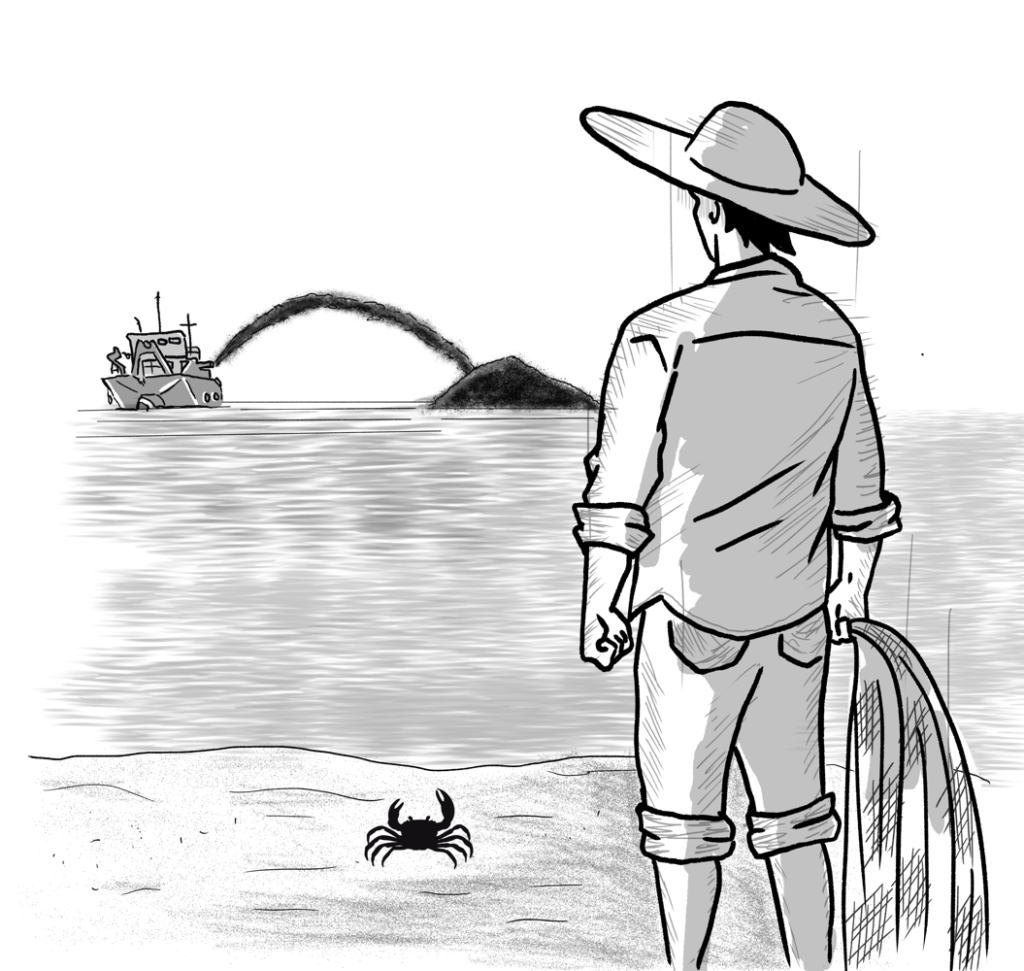From the beginning of foreign offshore mining operations (ocean mining) on the shores of Cagayan in 2021, it has caused a significant damage to the livelihood of fishermen in the Cagayan Valley.
The first and largest in the country, the offshore mining in Cagayan covers 56,013 hectares of coast and ocean in 10 towns in the region (Sanchez Mira, Claveria, Pamplona, Abulug, Ballesteros, Aparri, Buguey, Sta. Teresita, Gonzaga and Sta. Ana). It haunts sand sources of mineral magnetite, which is a hundred percent exported to China. Magnetite is a key ingredient in making iron.
Holding the operation of the Chinese company Apollo Global Capital Inc. Under the Duterte regime, the Mining and Geosciences Bureau has been granted a license for 25 years. The Agci permit was given despite the widespread and strong objections of local officials, environmental groups and project residents. It does not ignore the cover and irreparable (irreparable) damage to the offshore mining in the ecosystem not only in the operation of the operation, but the wider ocean.
It will include 50 hectares of reefs and forests of seagrass of protected islands and oceans, such as the Palaui Island Protected Landscape and Seascape and Babuyan Marine Corridor. These areas are home to blood, whales and many other animals that are at risk of disappearing.
The company insisted that there was no harm to nature in their operations, although it was impossible in accordance with research and studies. The ocean and all the sailors are just drilling in the seabed to suck the magnetite sand underneath. It is also a major obstacle to disposal back to the sea of rocks and sand after the mineral is separated. Its ships are also at risk of communities on the coast of Gonzaga. In 2023, the anchors of the dredging ship were rescued by the powerful winds of Typhoon Egay. One of its supporting tugboats was thrown to the shores.
At the start of the operation, Gonzaga fishermen were banned from getting rid of the mine. Due to the effects of the previous black sand mining operations performed on the shores of the town, they were forced to stay away because no one was caught near the coast.
As a result, the entire regional security security is affected. Mining covers the municipal waters (15 kilometers of ocean from coast) which is a source of 60.2% of the Cagayan Valley fish supply.
Mining on the veil of dredging
The Cagayanon added the impact of the Black Sand Mining of Riverfront Construction Inc. on the Cagayan River conducted on the "dredging" veil under the Cagayan River Restoration Program.
In the town of Aparri, the livelihood of the 11,000 citizens was overcome by the incessant operation of dredging ships and large ships carrying stone and sand to China. According to them, the activities of these ships create noise and excessive light, and dispose of chemicals that interfere with the ecosystem caused by the collapse of the number of fish and skin (small shrimp) which is the main source of their livelihood. The company is digging in areas where they are fishing, far from the scheduled area for dredging.
The fishermen have grown down since the "dredging" project began. From 200 containers to the last five days of a day, it would be fortunate if fishermen fill 50 containers. Also, the former 200 kilograms of fish late a boat in an overnight shovel became three kilograms. In 2021, their income fell to ₱ 300 to ₱ 1,000 pesos for a three -day break, far from the former income of ₱ 3,000 to ₱ 7,000.
It even affected the livelihood of the merchants. Prior to the start of the project, the bread and sellers of the last fish and other final fish and other final fish were up to ₱ 8,000. From 2021, their income has been less than ₱ 700 in 5-day sales.

